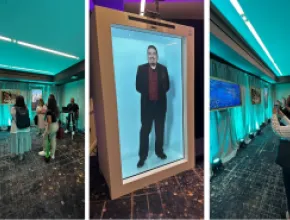For many people, a big part of online social media is playing electronic games—a fact that meeting planners and their groups are exploiting to enhance their events.
“There are some great strategies for brand-building through gamification,” says C. Russell Brumfield, founder and CEO of Wizard Studios Global Events, a production and event-planning company based near Tampa, Fla. “And marketers are taking it on.”
Online game playing has exploded since the rise of social media, according to Brumfield, especially Facebook, the premier social media service with more than 950 million users worldwide as of August. About 235 million people play games like Zynga’s Farmville and Mafia Wars on Facebook, an 8.4 percent increase over January, according to the company.
And a July 2011 eMarketer study determined that more than one-quarter of all U.S. Internet users and more than 40 percent of social network users played an electronic game at least once a month. The percentages promise to rise by the end of next year to 35 percent and 44 percent, respectively, according to the company.
“Playing games is one of the biggest reasons users go to Facebook,” company CEO Mark Zuckerberg has been quoted as saying.
As an indication of the growth in social gaming for events, Brumfield could find no takers when he first started marketing game products in July 2010. But last year he provided social media games to six events, and he plans to do about 20 events this year, with a goal of 100 next year.
As coined by marketers, the term gamification describes a program in which group organizers encourage specific actions by group members through games. Meeting planners will recognize the dynamic of gamification because it is essentially an incentive contest: Players compete against each other for prizes designed to raise the status of winners within the group.
“You can gamify any behavior by offering points and status levels to get people emotionally invested,” Brumfield says.
For example, Brumfield designed a game specifically for a bankers’ conference last spring called “The Road to Riches.” The “road” in the game suggested the long walk (five to 10 minutes) from the hotel to the convention hall, and the “riches” suggested the reward attendees would receive for taking that walk. The objective for event organizers: Get more conventioneers at least in the same building as exhibitors and educational sessions.
Along the walkway from the hotel to the convention center, people wore t-shirts or held signs that provided participants with clues to well-known phrases pertaining to money, such as, “A penny saved is a penny earned.” Game participants accessed on their smart phones or other mobile devices the game app that Brumfield created, and they received points for correctly answering the questions. A leader board was displayed on monitors in the hotel and convention center to encourage competition. The top winners were invited to meet with the main speakers, a high-status reward.
“They never had a game before,” Brumfield says of the group, “and they were happy with the results.”
About half the 4,000 attendees played the game, he says.
The cost to develop the customized game cost $30,000 for the initial deployment and will cost half that if the group licenses the game for its next meeting, which it plans to do, according to Brumfield.
Like most software that groups deploy, the perennial question arises about whether it’s more cost-effective to build or buy a program; in this case, an electronic game. (Brumfield has more information about gamification for groups, including a guide and white paper, on his website, wizardglobaltech.com, under the “Brainiac” tab.)
An Oracle Software white paper on gamification for marketers warns against over-spending on a customized game, however.
“Building a game yourself or having your agency build one for you can end up costing well over a million dollars,” the Oracle white paper states. “And often, such games perform poorly—at least in the beginning. Instead of taking on the task yourself, consider partnering with a company that has a library of white-label social games that you can use to engage with fans.”





